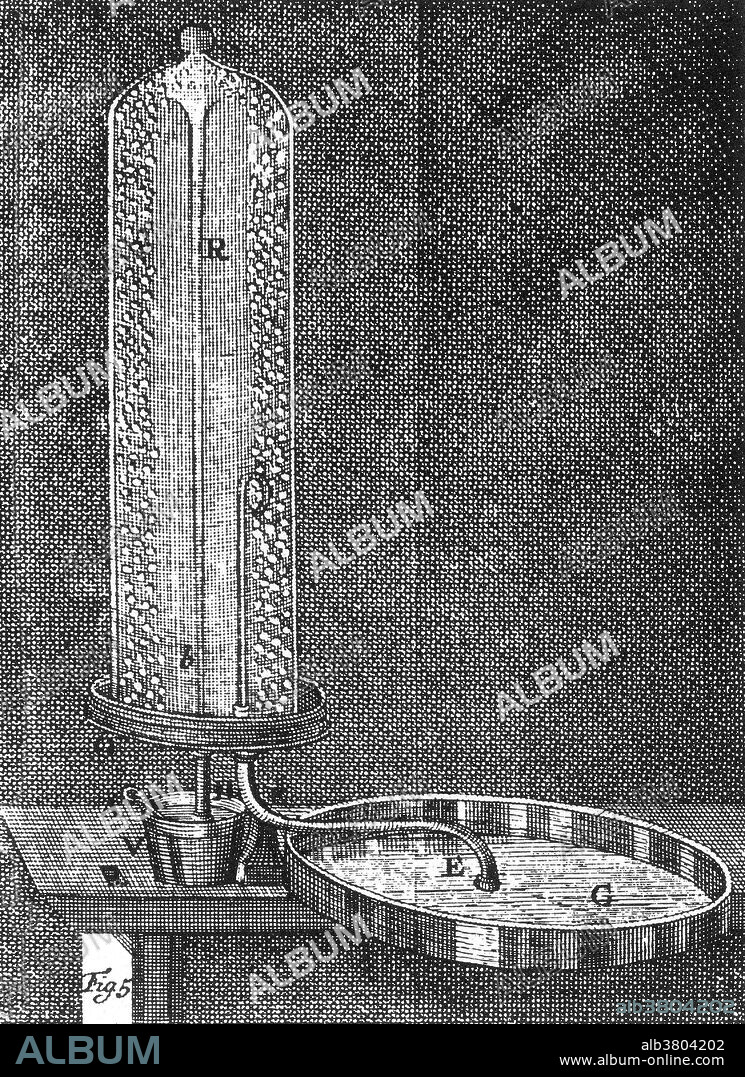alb3804202
Electrostatic generator experiment, 1700s

|
Ajouter à une autre Lightbox |
|
Ajouter à une autre Lightbox |



Avez-vous déjà un compte? S'identifier
Vous n'avez pas de compte ? S'inscrire
Acheter cette image

Titre:
Electrostatic generator experiment, 1700s
Légende:
Voir la traduction automatique
Electrostatic generator experiment. In 1705, Hauksbee had discovered that if he placed a small amount of mercury in the glass of his modified version of Otto von Guericke's generator, evacuated the air from it to create a mild vacuum and rubbed the ball in order to build up a charge, a glow was visible if he placed his hand on the outside of the ball. This remarkable discovery was unprecedented at the time. This glow was bright enough to read by. It seemed to be similar to St. Elmo's Fire. This effect later became the basis of the gas-discharge lamp, which led to neon lighting and mercury vapor lamps.
Crédit:
Album / NYPL/Science Source
Autorisations:
Modèle: Non - Propriété: Non
Questions sur les droits?
Questions sur les droits?
Taille de l'image:
3166 x 4350 px | 39.4 MB
Taille d'impression:
26.8 x 36.8 cm | 10.6 x 14.5 in (300 dpi)
Mots clés:
18 18E 18EME XVIII XVIIIE XVIIIEME SIECLE • 18E SIECLE • 18EME S • CÉLÈBRE • CELEBRITE • DIX-HUITIÈME SIÈCLE • ELECTRICITE • EUROPÉEN • EXPERIENCE • EXPERIENCES • EXPERIMENTATION • FABRICANT D'INSTRUMENTS DE MUSIQUE • GENERATEUR • HOMME DE SCIENCE • ILLUSTRATION • PHYSIQUE ELECTRICITE • PREPARATION D'EXPERIENCE • SAVANT • SCIENCE: EXPERIENCES • SCIENTIFIQUE • XVIIIE SIECLE
 Pinterest
Pinterest Twitter
Twitter Facebook
Facebook Copier le lien
Copier le lien Email
Email
